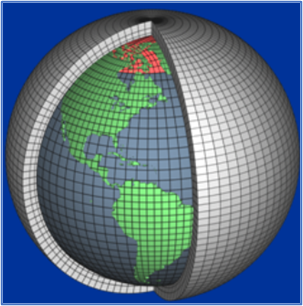Presentation Summaries: Future Water Supply, Demand and Hydrology
Recent Plan for Water workshops have focused on the future and what effects climate change may have on local hydrology and water supply and demands. Read on for summaries of those presentations.
1. Planning for the future in the face of a climate crisis

Today, NID faces the new challenge of planning for climate change impacts. NID is already seeing the impacts through increased temperatures and changes in precipitation patterns.
Temperature – Higher temps in NID watersheds
Global warming has raised global surface temperature about 2° F higher than those temperatures experienced in the 1900s. Generally, an increase in temperatures will make the soils drier and increase evapotranspiration resulting in higher water losses and reduced inflows.
Snow – less snowpack that melts faster
NID’s mountainous upper watershed acts as a natural reservoir, releasing snowmelt runoff during the spring and summer months. Climate change impacts will result in less snowpack and faster melting of the snowpack.
Read the full summary: Climate change presentation summary, click here.
Presentation: NID-PFW Global Climate Projections and Unimpaired Hydrology May 23, 2023
2. NID PFW Workshop: Climate Change Scenarios (Oct. 10, 2023)

While talking about climate change and water supplies in the future, an important component for consideration in water management is inflow projections; that is, the effect of a warmer climate on how much water might enter reservoirs each year.
Consultant Western Hydraulics discussed different scenarios during its presentation during the Oct. 10 Plan for Water (PFW) workshop.
- Less water available for customers: cumulative inflow to decrease
- Inflows to occur earlier in the year
Read the full summary: "Unmet demand scenarios"
Presentation: NID PFW Reservoir Operations Modeling Results Summary Climate Change Scenarios 10/10/2023
3. NID PFW Workshop: Summary of Strategy Options Discussion
In a culminating point in the Plan for Water (PFW) process, the NID Board of Directors have identified options to model and further research as they look to identify strategies to ensure water is available to customers in the future.
The Nov. 13 workshop focused on PFW Stage 10, with the purpose of evaluating different strategies that benefit the District’s water supply. This includes the effort needed for implementation and the anticipated improvement in either demand reduction, increased supply, or improvement to watershed health.
Presented were some 15 options, including for operations, such as canal automation and metered raw water accounts; watershed management; canal improvements, like encasing and/or lining; and storage augmentation, such as dredging sediment from reservoirs and developing new storage.
Directors discussed each option presented in a spreadsheet, considering cost, change in acre-feet with implementation, environmental impacts, operational impacts, feasibility, risk, and customer impacts. Each of these would reduce demands and/or increase supplies.
Read the full summary, including the options that NID Directors indicated warrant further research
